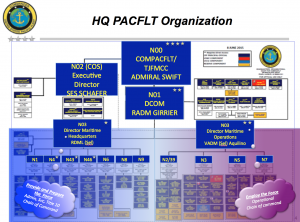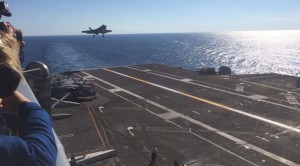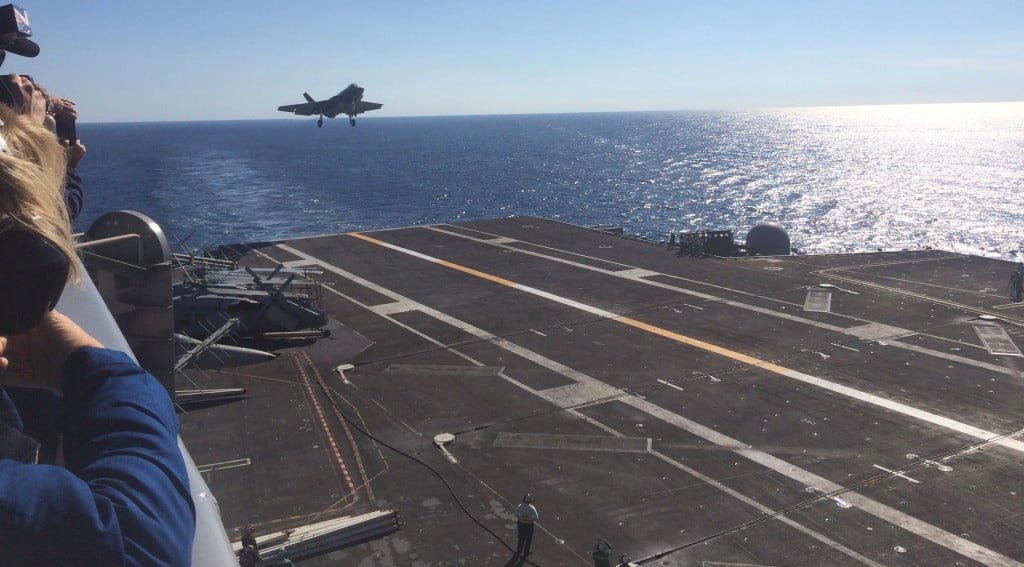2015-08-09 By Robbin Laird
Pac Fleet operates in the largest area of operations for US forces.
The immensity of the theater of operations, as well as the dynamics of change in the region, pose ongoing challenges of matching resources against tasks in protecting US interests and working closely with allies and partners.
Recently, I had a chance to sit down with the PACFLEET’s Director of Maritime Operations, Rear Admiral Aquilino to discuss the challenges and the way ahead.
In his current position, he is at the vortex of the operational capabilities and deployment of the fleet, and is positioned to understand the dynamics of shaping strategy up against the ongoing challenges and threats in the Pacific.

Against the backdrop of a growing chorus of comments Inside the Beltway about the growing ability of the Chinese to purse an effective area denial strategy, Admiral Aquilino presented a different perspective.
Clearly, China is improving its capabilities to operate in the Pacific, and quantity has a quality all of its own, but the Chinese are coming out into the Pacific, and the are not “12 feet tall.”
The Admiral highlighted that the Pacific when all is said and down is a maritime domain, and learning to operate in the blue water and to operate from the sea into the littorals is an art form which needs to be learned, and not just assumed.
The US Navy has a long history in the region, and has gone through many learning cycles.
And the strategy in the Pacific was simply put by the Admiral: “We need to have the ability to operate where it matters and when it matters. And we can do that.”
He followed the lead of the CNO who emphasizes that if one fight the high end fight, one can adapt to the other challenges; but the reverse is not necessarily true.
We discussed distributed lethality and the evolving US Navy’s joint and coalition approach to deploying diversified and distributed capabilities which can when combined in coordinated concepts of operations deliver what is needed in the area of interest.
“What I think is meant by distributed lethality is an ability to have an agile and diversified force operating over an extended battlespace but with an ability to concentrate force against the crucial tasks, targets and goals to execute an effective strategy.”

When asked what technologies are coming to the Pacific which we enable PACFLEET to achieve this strategy more effectively, he quickly focused on the coming of the F-35 to the fleet and to the region.
“I mentioned earlier that our task is clearly that we need to have the ability to operate where it matters and when it matters.
The F-35 will enhance our ability to do so.
Although I am a naval aviator, I am not speaking as one when I make this point about the new aircraft.
It is a force multiplier and enhancer not just a new combat aircraft. It clearly will enhance or air-to-air and air-to-ground capabilities, but it as a deployed and integrated sensor aircraft it extends our reach and expands our flexibility and agility.”
He focused on the F-35’s role organically with PACFLEET (on carriers and on amphibious ships) but also in terms of being able to draw from the sensor stream of a deployed USAF as well as allied force of F-35s.
“The integration of the sensor grid is a crucial and evolving capability which will be expanded as the F-35 enters the Pacific.”
My colleague Ed Timperlake referred to the evolution, which the Admiral was discussing as the 21st Century variant of the “big blue blanket.”
As we put in our book on the evolution of Pacific strategy:
“In World War II, the USN shaped what became called the big blue blanket of ships to cover the Pacific operations.
Obviously, this is beyond the ken of current realities, but shaping a connected set of U.S. and allied forces able to work together to shape defense and security in the Pacific is not.” [ref]Laird, Robbin F.; Timperlake, Edward (2013-10-28). Rebuilding American Military Power in the Pacific: A 21st-Century Strategy: A 21st-Century Strategy (The Changing Face of War) (Kindle Locations 213-215). ABC-CLIO. Kindle Edition.[/ref]
The Admiral clearly had a similar thought in mind in our discussion.
And clearly was not ceding ground against those who assume that an area denial strategy was already effectively in place.
U.S. Navy Biographies – REAR ADMIRAL JOHN C


